- Home
- Seanan McGuire
Submerged
Submerged Read online
Submerged
Other Anthologies Edited by:
Patricia Bray & Joshua Palmatier
After Hours: Tales from the Ur-Bar
The Modern Fae’s Guide to Surviving Humanity
Clockwork Universe: Steampunk vs Aliens
Temporally Out of Order
Alien Artifacts
Were-
All Hail Our Robot Conquerors!
Laura Anne Gilman & Kat Richardson
The Death of All Things
Submerged
Edited by
S.C. Butler
&
Joshua Palmatier
Zombies Need Brains LLC
www.zombiesneedbrains.com
Copyright © 2017 S.C. Butler, Joshua Palmatier, and Zombies Need Brains LLC
All Rights Reserved
Interior Design (ebook): April Steenburgh
Interior Design (print): C. Lennox Graphics, LLC
Cover Design by C. Lennox Graphics, LLC
Cover Art “Submerged” by Justin Adams
ZNB Book Collectors #8
All characters and events in this book are fictitious.
All resemblance to persons living or dead is coincidental.
The scanning, uploading, and distribution of this book via the Internet or any other means without the permission of the publisher is illegal and punishable by law. Please purchase only authorized electronic editions of this book, and do not participate or encourage electronic piracy of copyrighted material.
Kickstarter Edition Printing, August 2017
First Printing, September 2017
Print ISBN-10: 1940709121
Print ISBN-13: 978-1940709123
Ebook ISBN-10: 194070913X
Ebook ISBN-13: 978-1940709130
Printed in the U.S.A.
Copyrights
Introduction copyright © 2017 by S.C. Butler
“Rust in Peace” copyright © 2017 by Seanan McGuire
“Another Dream to Europa” copyright © 2017 by
Michael Robertson
“Go with the Flow” copyright © 2017 by Esther Friesner
“The Deep End” copyright © 2017 by F. Brett Cox
“Through Milkweed and Gloom” copyright © 2017 by Wendy Nikel
“Son of Blob” copyright © 2017 by Marsheila Rockwell &
Jeffrey J. Mariotte
“Under Pressure” copyright © 2017 by Jody Lynn Nye
“The Last of the Real Good Days” copyright © 2017 by Bill Kte’pi
“The Windlost” copyright © 2017 by Rhondi Salsitz
“Tamatori” copyright © 2017 by Susan Jett
“High Sulfur Hot Springs and Camping Park” copyright © 2017 by James Van Pelt
“The City Under the Sea” copyright © 2017 by Jeanne Cook
“Pen’s Bracer” copyright © 2017 by Misty Massey
“Fathoms Deep and Fathoms Cold” copyright © 2017 by
A. Merc Rustad
“River of Stars” copyright © 2017 by David Farland
“The Byssus Woman” copyright © 2017 by Sara M. Harvey
“The Seven Nights of Squidmas” copyright © 2017 by
Nicole Duson
Table of Contents
Introduction by S.C. Butler
“Rust in Peace” by Seanan McGuire
“Another Dream to Europa” by Michael Robertson
“Go With the Flow” by Esther Friesner
“The Deep End” by F. Brett Cox
“Through Milkweed and Gloom” by Wendy Nikel
“Son of Blob” by Marsheila Rockwell & Jeffrey J. Mariotte
“Under Pressure” by Jody Lynn Nye
“The Last of the Real Good Days” by Bill Kte’pi
“The Windlost” by Jenna Rhodes
“Tamatori” by Susan Jett
“High Sulfur Hot Springs and Camping Park” by James Van Pelt
“The City Under the Sea” by J.C. Koch
“Pen’s Bracer” by Misty Massey
“Fathoms Deep and Fathoms Cold” by A. Merc Rustad
”River of Stars” by David Farland
“The Byssus Woman” by Sara M. Harvey
“The Seven Nights of Squidmas” by Nicky Drayden
About the Authors
About the Editors
Acknowledgments
INTRODUCTION
S.C. Butler
From Jonah to Jules Verne, the depths of the oceans have always intrigued us. Whether it’s the nightmares we can’t see—Kraken, Leviathan, Cthulu—or those we sometimes wish we could—Selkies, Mermen, Flipper—the unfathomable trenches and abyssal plains that lie buried beneath three-quarters of the surface of the earth are home to some of the most celebrated inhabitants of our imaginations. Fantasy and science fiction have explored the depths of space countless times, but those nearer unknowns that lie beneath the keels of our ocean liners and canoes, not so much.
Here, then, are seventeen tales of underwater mystery and adventure, from seventeen masters of horror, fantasy, and science fiction. Cringe in terror as you investigate the Love-craftian mysteries of the tenth planet. Laugh (and groan) through the seven days of Squid-mas. Savor sweet revenge from the bottom of your victim’s wineglass. High-five a giant squid, battle nautiluses with underwater magic cowboys, or experience first contact in the frigid depths of Europa. These adventures, and more, await your first plunge into the deep end of…SUBMERGED.
RUST IN PEACE
Seanan McGuire
The body of the ocean liner dominated the ocean floor, a great husk of rot and rust and broken glass. The color of her hull was no longer obvious, obscured by waving strands of opportunistic sea grass and the clinging bodies of the sea stars that had come to hunt and feed. Fish swam through the gashes in the ship’s side, bodies undulating with the current, untroubled by the slow approach of our submersible.
I had never seen anything more beautiful in my life.
“There she is, Dave,” I whispered, unable to keep the awe and delight—and yes, relief—from my voice. “Just where we knew she’d be. There she is.”
Dave didn’t say anything. He’d always been a careful diver, more aware of his surroundings and the risks that attended them, than anyone else I’ve ever known. This was the man I would trust to ferry me into Hell, if that particular dive ever became necessary. He’d get me through the rivers of molten iron and lava in one piece.
He’d gotten me here.
“The Sendale Star,” I breathed. If Dave tended toward silence, I preferred sound. It was never quiet this far below the sea. The water had weight here, and with weight came a soft but constant susurration, like we were moving through the veins of some great, living beast. I often thought that all the people who scoffed at the idea of “Mother Earth” should be sealed in a fragile metal can and dropped to the bottom of the Pacific, where they could hear the heartbeat around them, the sound of current and tide and living sea.
Of course, they’d probably demand we pave the oceans if we did that to them. Someone who doesn’t want the planet to be alive certainly doesn’t want it to be bigger than them.
I put that line of thought brusquely aside. We weren’t here for the living, or for the political. We were here for the dead, and for the biggest infusion of cash our bank accounts would ever see.
“Get us in closer,” I said. Dave answered with a grunt, steering the submersible slowly toward the great rusting bulk of the Star.
Damn, but she was beautiful. Her lines were still as clean as the day she’d been finished, emphasized rather than obscured by the alterations her time in the living sea had made. The absence of paint and polish did nothing to lessen her beauty—if anything, they enhanced it, showing that she was the kind of lady who needed no effort, no ar
tifice, to be beautiful beyond measure.
The hole in her side was a gaping, jagged wound that would never heal. Even after we finished wandering through her bones, learning everything we could, and notified the authorities of her location—earning ourselves a fat finder’s fee in the process, naturally—that hole would remain. She had historical value, not nautical. She’d go to a museum or a lab somewhere, and everything about her would be picked apart and analyzed before she was released to someone who would tear her apart for scrap.
She would sail again. Not as she was now, but reincarnated into a hundred new forms, part of the bones of a hundred new ships. If I thought of it that way, this didn’t feel as much like a betrayal. More like a rebirth. We were going to raise this fallen lady from her watery grave and set her on the waves when we were done, and while she might not be grateful, she would be gracious to the end. I could see it in the proudness of her prow.
“This is as close as I can get without disturbing the ship,” said Dave.
“It’s close enough.” I gazed longingly out the front window at the money, at the history, at the opportunity spread before us on the sea floor, and I smiled. “We come back tomorrow, ready to dive.”
* * *
The Sendale Star was a luxury liner. Not in the same class as the Titanic or any of those other big, eye-catcher ships: she was smaller, faster, and equally, intensely expensive, even though she was only ever intended to make short hops along the Pacific Coast. She was beautiful, she was exclusive; everything about her screamed “class” to the status-hungry nouveau riche who had come to the golden, hardscrabble shores of California and the Pacific Northwest looking for a fortune and, upon finding it, found no path into the high society they so yearned to enter. To the East Coast, they were new money, little better than the poor.
But the Star…oh, the Star didn’t care about the age of their money, only the color, only the way it glimmered with power and potential when set against the price tag of the world. Better still, the Star took her bookings locally, which meant that if one of those fancy Easterners wanted to go for a ride through the most beautiful waters in the world, gazing out on miles of pristine, exploitable coast, they would have to travel to Vancouver or San Francisco, at no small expense, only to risk finding themselves in a third-class cabin, or worse yet, in steerage. This was something the West Coast’s wealthy could have that their unwilling peers could only dream of.
She sailed the coast four times, down and back, without incident. Maybe the bloom would have been off the rose before too much longer: novelty is in many ways the most expensive thing of all.
On her fifth voyage, a man—Mr. Matthew Alder, of Portland, Oregon—boarded with his family. This was, in and of itself, unremarkable: history would have forgotten him, if not for two things.
The ship was lost, with all hands, somewhere between the ports of Seattle and Vancouver. Despite being an increasingly trafficked stretch of sea, rich with cruise liners and Coast Guard vessels, the Star’s location would remain unknown for decades. The cruise line that had owned her and claimed her as their biggest asset went bankrupt in the aftermath of the disaster, and their records were seized by local authorities, not to be seen until an informant responded positively to the idea of bribery. That’s the first. The second…
When Mr. Alder’s sister came to clean out his home and claim his things, she found a note on the mantle, positioned so anyone who entered the home would be sure to see it. In her brother’s hand, it read only, I am so sorry for what is to follow. Be assured that the damage would have been greater had we not set out to sea.
To this day, no one has known what he meant…and to this day, treasure hunters have been seeking the fallen Star.
Until this day. When we finally found her. Untouched by anything save for the sea that became her grave, waiting for us to come and bring all her sweet and hidden secrets home.
Ours.
* * *
The nice thing about looking for a ship as famous as the Star is that it’s easy to know where not to look. Just go online and look up all the places people have written about going. Then dig a little deeper, and mine the social media of your competitors for references that tie them to a specific place, a specific time. While Dave had been applying his military research skills to going over maritime records and a hundred years of weather reports, I had been chewing on Facebook and Twitter and Reddit, filtering the noise, cross-referencing the “good spots” that people had been hoarding for years while they hunted for that eventual perfect payday.
Treasure hunters love to share our successes. We’re not always so happy to share our failures, reasoning that if we don’t tell the competition where we’ve already been, maybe they’ll waste their time going there just like we did. But then Dave found some current maps that had been adjusted with new data, and I confirmed that no one had yet been to our most likely site, in part because it seemed unrealistic for a ship as large as the Star to wind up in a region defined by little islands and shallow waters, and now here we were. Here we were, on the cusp of changing our lives forever.
My dive suit was skintight and comfortably confining. Some people find them claustrophobic, but I appreciate the way a well-fitted dive suit clings, keeping me from feeling like I’m alone in the open sea. Dave was fiddling with his equipment, checking the wireless feed that would keep my cameras streaming back to our ship. By presenting an unbroken chain of events from the moment we found the Star until we came up with the first of our many, many prizes, we could make it more difficult to challenge our claim to be the ones who had located the Star. Always important, especially with a find of this size.
Salvage law stated that, since the Star was located within three miles of the United States coastline, everything on her belonged to the government. But the find—the prestige and importance of being the first ones to shout “tag, you’re it”—was still a pearl beyond price. We could collect rewards from the surviving relatives of several of the passengers, who had been waiting for decades to know for sure what had happened. We could write our own ticket with burgeoning treasure hunters, who would suddenly see us as the best the sea had to offer.
There is more to wealth than chests of gold and jewels. Although it would have been nice to keep a few of those, if I were being honest.
“All signals strong,” said Dave.
“Awesome,” I replied. “I have enough air on me for an hour, counting descent and ascent, so I’m going to get moving.” Once I was in the water, he would be able to speak to me, thanks to my waterproof ear bud, but I wouldn’t be able to respond. There are things technology has not yet managed to achieve.
Dave frowned. “I wish you weren’t going down there alone.”
“Can’t be helped.” My girlfriend and I had had a parting of the ways six months ago, when she decided that waiting around for me to make the big score was not as useful as moving to Montana and working for an accounting firm. Prior to that, she had been my spotter on dives. Dave was right: it was dangerous for me to go down alone. But by the time Cynthia had left us, we had been so close to the Star that there hadn’t been time to find a replacement. We couldn’t trust anyone who’d want to join us.
I was good. I was accomplished. I would be fine.
Smiling at Dave, I slipped the mask down over my face and stepped off the deck, plunging into the water. A veil of bubbles accompanied me down, wrapping itself around me like a wedding gown. When it cleared, I turned on my light and began to swim.
Our small submersible was great for scouting runs: with it, we could travel miles along the bottom of the sea, recording and analyzing everything we saw. Sometimes we found things that were of clear scientific interest, and would set those aside until the meat of the dive was done and we were no longer concerned about leading the competition to our location. Most of the time, we saw lots of spectacular fish. That was enough. No one goes into a profession like ours unless they truly love the sea. Although the money, when it happens, doesn�
�t hurt.
Despite the submersible’s undeniable advantages, there are some things that have to be done by a single diver, alone against the sea. So I swam, the lights attached to my shoulders illuminating the water, until there she was: the Star, resting rusted and lovely on the bottom. I swallowed a sigh of relief and pleasure. Part of me had believed, despite all evidence to the contrary, that the Star would be gone, or crawling with rival divers, when we came back. She disappeared once before, after all, without a whisper, without a trace. Even this spot…
We followed the weather reports and we followed the last known headings for her position and we followed the rumors and we followed the gossip, and the fact remains that we got here first—us, out of all the people in the world—because we were willing to take the long shot. We were five hundred miles away from where we should be. There was no logical way the Star should be here, so far from where her course would have seen her go down.

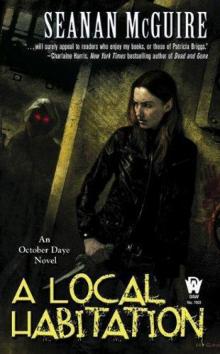 A Local Habitation
A Local Habitation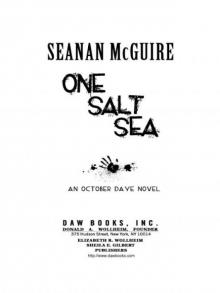 One Salt Sea
One Salt Sea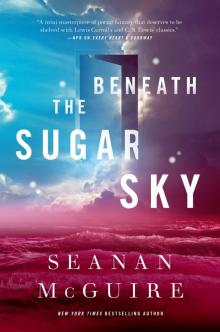 Beneath the Sugar Sky
Beneath the Sugar Sky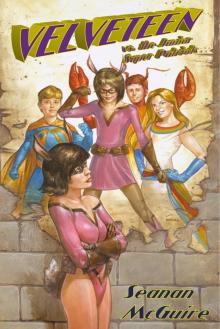 Velveteen vs. The Junior Super Patriots
Velveteen vs. The Junior Super Patriots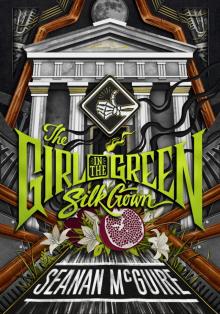 The Girl in the Green Silk Gown
The Girl in the Green Silk Gown Midnight Blue-Light Special
Midnight Blue-Light Special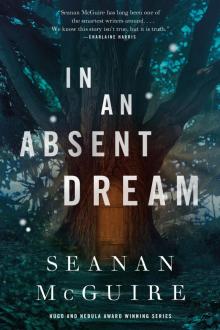 In an Absent Dream
In an Absent Dream Chaos Choreography
Chaos Choreography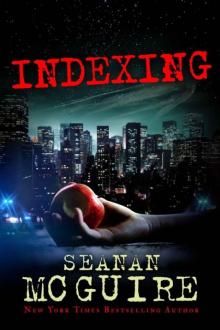 Indexing
Indexing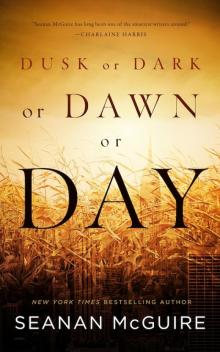 Dusk or Dark or Dawn or Day
Dusk or Dark or Dawn or Day Down Among the Sticks and Bones
Down Among the Sticks and Bones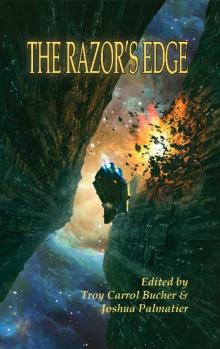 The Razor's Edge
The Razor's Edge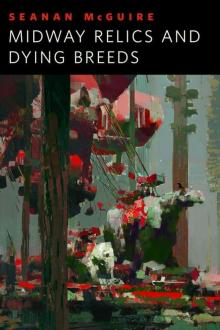 Midway Relics and Dying Breeds
Midway Relics and Dying Breeds Pocket Apocalypse
Pocket Apocalypse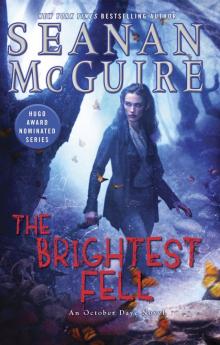 The Brightest Fell
The Brightest Fell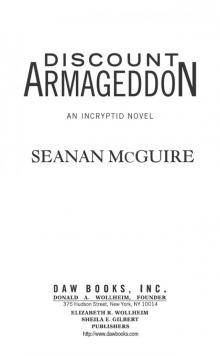 Discount Armageddon
Discount Armageddon Snakes and Ladders
Snakes and Ladders Chimes at Midnight
Chimes at Midnight Broken Paper Hearts
Broken Paper Hearts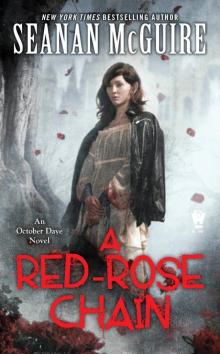 A Red-Rose Chain
A Red-Rose Chain Married in Green
Married in Green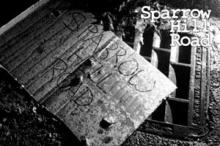 Sparrow Hill Road 2010 By Seanan
Sparrow Hill Road 2010 By Seanan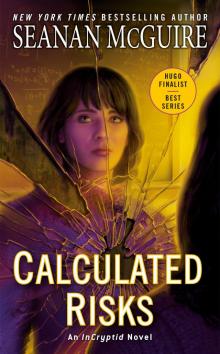 Calculated Risks
Calculated Risks Laughter at the Academy
Laughter at the Academy The Winter Long
The Winter Long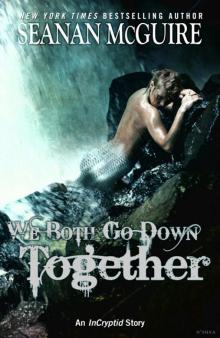 We Both Go Down Together
We Both Go Down Together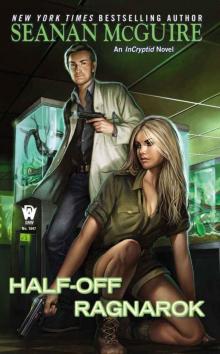 Half-Off Ragnarok
Half-Off Ragnarok Velveteen vs. The Seasons
Velveteen vs. The Seasons Boneyard
Boneyard A Killing Frost
A Killing Frost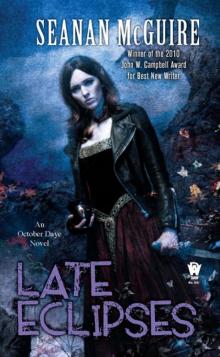 Late Eclipses
Late Eclipses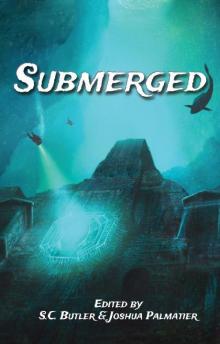 Submerged
Submerged Blocked
Blocked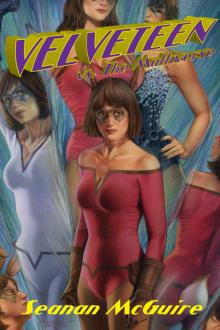 Velveteen vs. The Multiverse
Velveteen vs. The Multiverse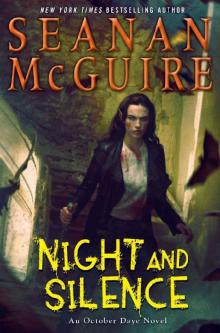 Night and Silence
Night and Silence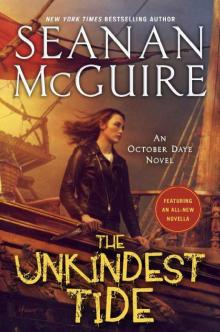 The Unkindest Tide (October Daye)
The Unkindest Tide (October Daye)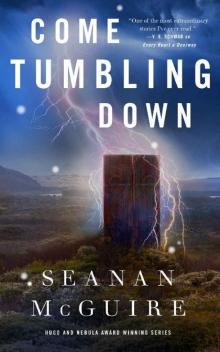 Come Tumbling Down (Wayward Children)
Come Tumbling Down (Wayward Children) Snake in the Glass
Snake in the Glass Magic for Nothing
Magic for Nothing Full of Briars
Full of Briars Oh Pretty Bird
Oh Pretty Bird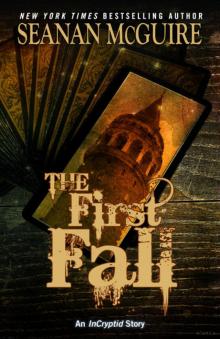 The First Fall
The First Fall Once Broken Faith
Once Broken Faith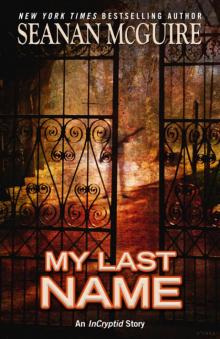 My Last Name
My Last Name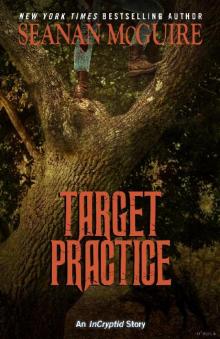 Target Practice
Target Practice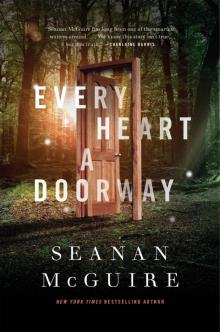 Wayward Children 01 - Every Heart a Doorway
Wayward Children 01 - Every Heart a Doorway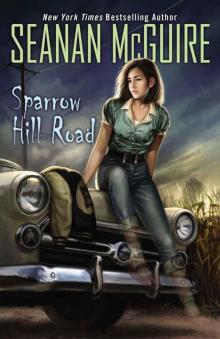 Sparrow Hill Road
Sparrow Hill Road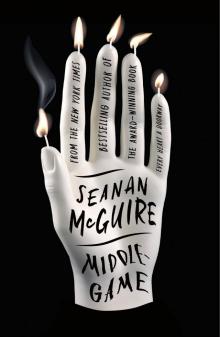 Middlegame
Middlegame Juice Like Wounds
Juice Like Wounds That Ain't Witchcraft
That Ain't Witchcraft Tricks for Free
Tricks for Free Imaginary Numbers
Imaginary Numbers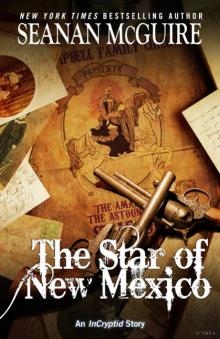 The Star of New Mexico
The Star of New Mexico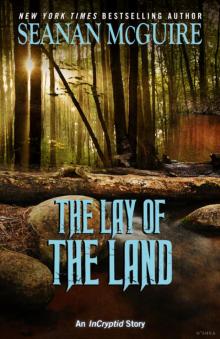 Lay of the Land
Lay of the Land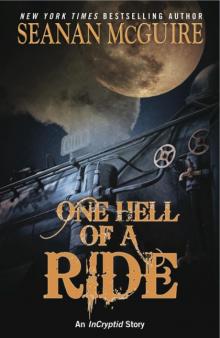 One Hell of a Ride
One Hell of a Ride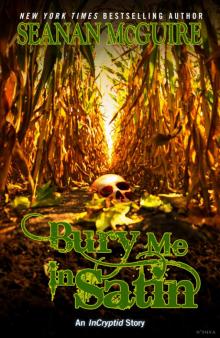 Bury Me in Satin
Bury Me in Satin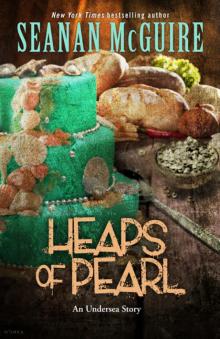 Heaps of Pearl
Heaps of Pearl Sweet Poison Wine
Sweet Poison Wine When Sorrows Come
When Sorrows Come Every Heart a Doorway
Every Heart a Doorway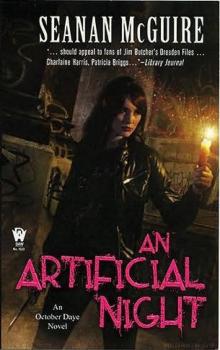 An Artificial Night - BK 3
An Artificial Night - BK 3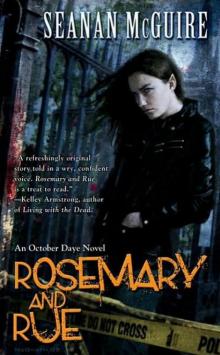 Rosemary and Rue
Rosemary and Rue Black as Blood
Black as Blood Loch and Key
Loch and Key Discount Armageddon: An Incryptid Novel
Discount Armageddon: An Incryptid Novel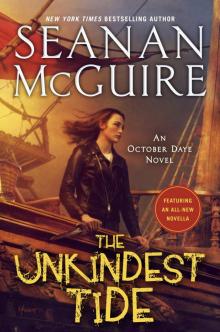 The Unkindest Tide
The Unkindest Tide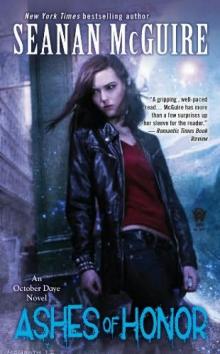 Ashes of Honor od-6
Ashes of Honor od-6 A Local Habitation od-2
A Local Habitation od-2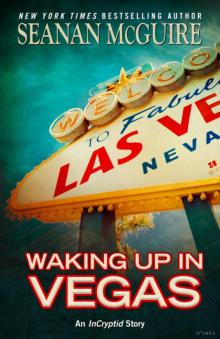 Waking Up in Vegas
Waking Up in Vegas The Ghosts of Bourbon Street
The Ghosts of Bourbon Street Midnight Blue-Light Special i-2
Midnight Blue-Light Special i-2 Bless Your Mechanical Heart
Bless Your Mechanical Heart Chimes at Midnight od-7
Chimes at Midnight od-7 The Way Home
The Way Home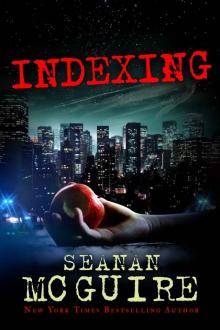 Indexing (Kindle Serial)
Indexing (Kindle Serial)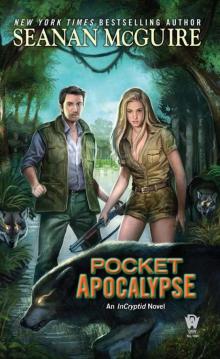 Pocket Apocalypse: InCryptid, Book Four
Pocket Apocalypse: InCryptid, Book Four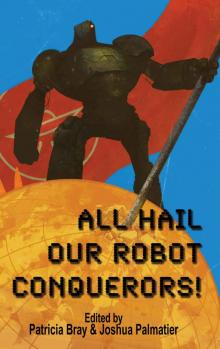 All Hail Our Robot Conquerors!
All Hail Our Robot Conquerors! Were-
Were-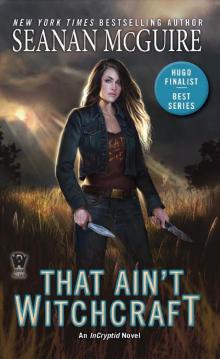 That Ain't Witchcraft (InCryptid #8)
That Ain't Witchcraft (InCryptid #8)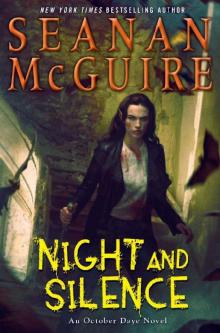 Night and Silence (October Daye)
Night and Silence (October Daye) Late Eclipses od-4
Late Eclipses od-4 Ashes of Honor: An October Daye Novel
Ashes of Honor: An October Daye Novel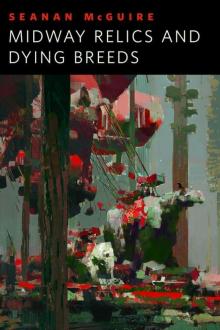 Midway Relics and Dying Breeds: A Tor.Com Original
Midway Relics and Dying Breeds: A Tor.Com Original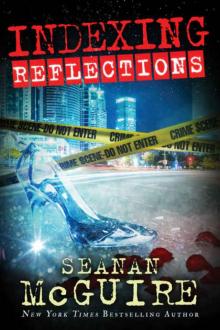 Indexing: Reflections (Kindle Serials) (Indexing Series Book 2)
Indexing: Reflections (Kindle Serials) (Indexing Series Book 2) Chimes at Midnight: An October Daye Novel
Chimes at Midnight: An October Daye Novel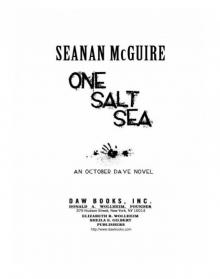 One Salt Sea: An October Daye Novel
One Salt Sea: An October Daye Novel Rosemary and Rue od-1
Rosemary and Rue od-1 Rosemary and Rue: An October Daye Novel
Rosemary and Rue: An October Daye Novel Lightspeed Magazine Issue 49
Lightspeed Magazine Issue 49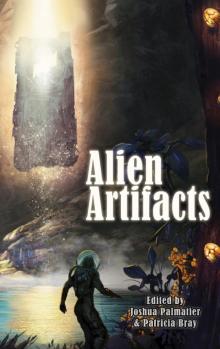 Alien Artifacts
Alien Artifacts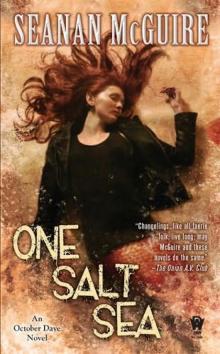 One Salt Sea od-5
One Salt Sea od-5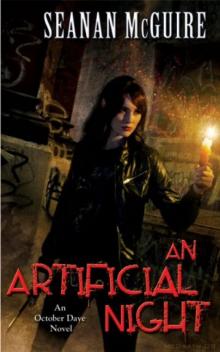 An Artificial Night od-3
An Artificial Night od-3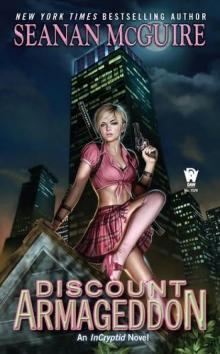 Discount Armageddon i-1
Discount Armageddon i-1